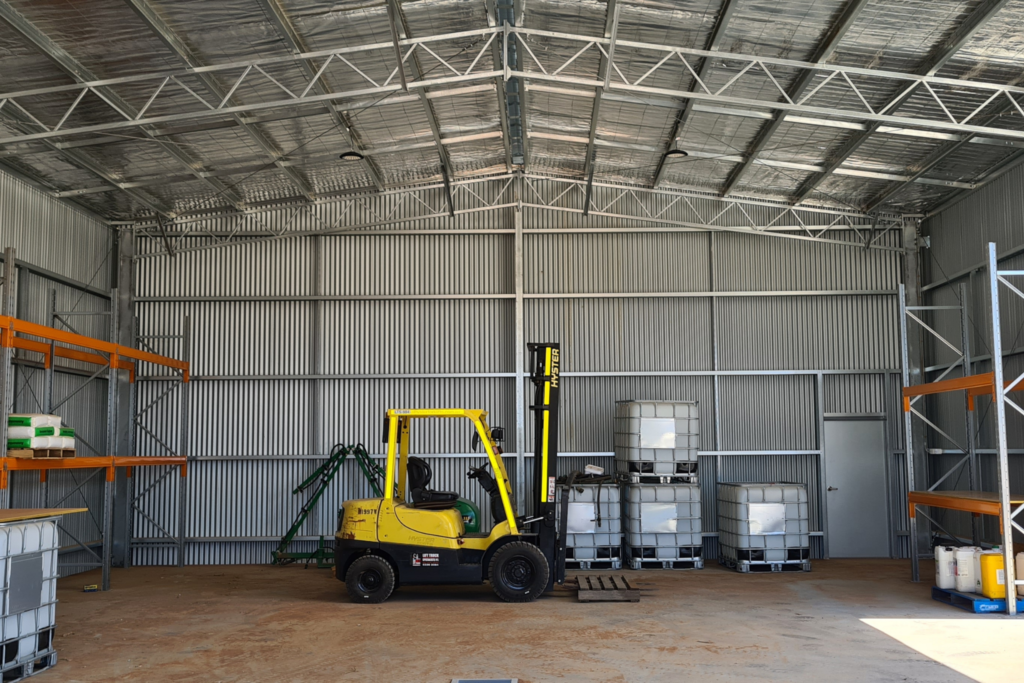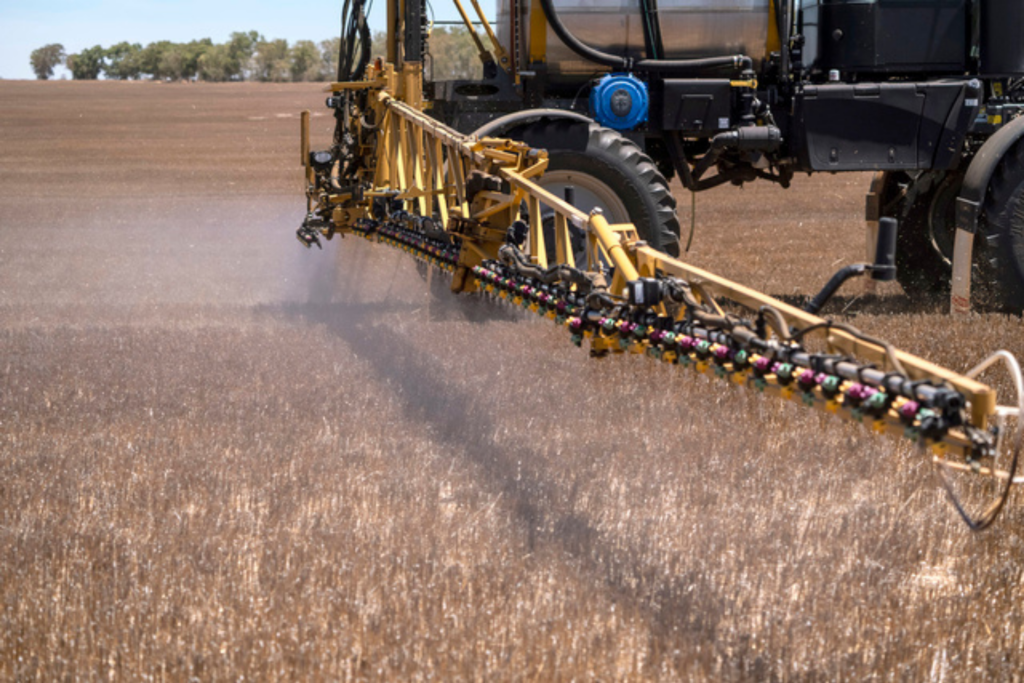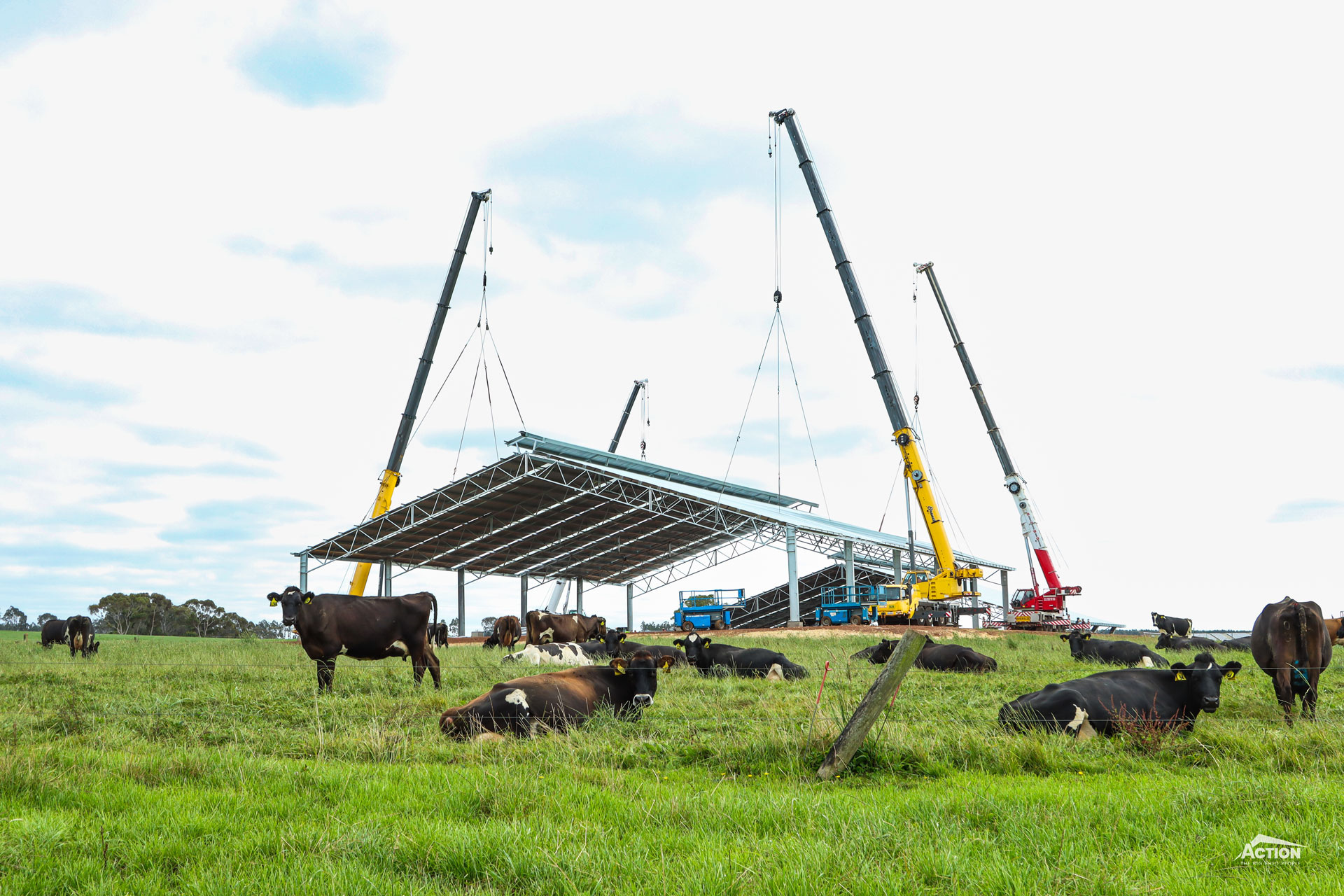Here’s what you need to know about spray drift! If you are looking for a back-to-basics guide on spray drift and a refresher on current spray drift regulations and guidelines, then this article is perfect for you.
Keep reading to find the answers to all your questions about spray drift and learn about chemical volatility, surface temperature inversion and how to prevent
spray drift.
In this Article
What Is Spray Drift?
Spray drift is the term used to describe when chemicals are sprayed, and droplets of chemicals hang in the air and are carried away from the target spray area by the wind. Spray drift can occur in three different ways, as droplet drift, particle drift or as vapour drift.
Droplet drift: The most common cause of off-target drift, droplet drift occurs when poor weather conditions carry droplets away from the spray area.
Particle drift: This occurs when water in the spray droplets evaporates, creating smaller droplets of concentrated chemicals. These smaller droplets remain airborne for longer and can drift kilometres away from the spray target area – in some cases damage has occurred to crops thirty kilometres away.
Vapour drift: Vapour drift relates to volatile herbicides that will turn into a gas after application. With volatile herbicides, vapours can rise from the surface for hours or even days after spraying. The best way to avoid vapour drift is to choose a herbicide with low volatility.
What Causes Spray Drift?
As we have already discussed, spray drift occurs due to droplet drift, particle drift or vapour drift. These are caused by factors such as the weather conditions and chemical volatility but there are a few other factors that affect the risk of spray drift, for example, the height of the spray release, size of the target area and the application method.
Let’s discuss the factors that influence the risk of spray drift in more detail.
Factors that increase the risk of spray drift.
- This one is simple, the more herbicide applied per hectare the more herbicide available to drift away from the target.
- Aerial application generally sprays at three metres above the target but at low application volumes. Conversely, a ground rig will release the herbicide at a lower height but with higher application volumes. Misters can also be used, these produce a high volume of fine droplets that are carried by the wind over the target area.
Whatever the application methods and equipment used, if used incorrectly or in the wrong conditions, they can contribute to a spray drift situation. For example, with an aerial application, high air speeds can cause air shear which shatter droplets into smaller sizes.
- While ‘droplet capture efficiency’ sounds rather complex it is fairly straightforward and refers to the ability of the target area to capture the drifting droplets. For example, established leafy crops have a much better droplet capture efficiency compared to bare soil or seedling crops – so it is important to consider the type of surface of your target area, and the surface area between the target area and susceptible crops.
- The droplet size influences how far the spray drift will spread. This is because a small droplet will fall more slowly than a larger droplet and will be carried further by air currents before settling on the ground.
- The spray release height influences how much chemical is left in the air – the higher the chemical is released, the more it will be carried before it settles.
- A large target area can increase the risk of spray drift simply because a larger area will take longer to be sprayed, meaning there is a higher chance that weather conditions will change in this time.
- Also known as an atmospheric inversion, surface temperature inversion occurs at night or early in the morning when conditions are still. In these conditions the spread of droplets becomes unpredictable. This document from Agriculture Victoria helps explain surface temperature inversions and how to recognise when it is occurring.
- When there is high ambient temperatures and low humidity, the rate of evaporation increases in turn increasing spray drift.
- As we have already mentioned, vapour drift can occur with volatile chemicals.
- The faster the wind speed, the further spray droplets will be carried before they drop and land on the target surface area.
Obviously, a combination of these factors can combine to provide conditions conducive to spray drift and that can have serious implications, which leads us to our next question – why is spray drift a problem?

Why Is Spray Drift A Problem?
Spray drift causes a plethora of issues including crop damage, production losses, contaminated soil and waterways and damage to native vegetation, as well as causing human health issues.
Cotton, for example, is sensitive to spray drift from Group I herbicides such as 2,4-D. According to Cotton Australia, in 2018, spray drift cost an estimated $18 million in production losses for the Australian cotton industry!
Spray drift is also a concern for vineyard and vegetable growing districts and broadacre farming areas where there is a wide scale sowing of canola, faba beans, lupins and peas.
“This isn’t about one sector or industry, it’s about an entire farming community coming together to take action to prevent potential losses which can be devastating for farming families.” – National Farmers Federation CEO Tony Mahar
So, now that we know what spray drift is, what it is caused by and why it is a serious issue for Australian Agriculure, let’s look at ways we can prevent and reduce spray drift.
How To Prevent Spray Drift
Here are some helpful tips and suggestions on how to prevent, reduce and manage the risk of spray drift.
- Be aware of weather conditions before, during and after spraying. Never spray in surface temperature inversion conditions, avoid spraying in high temperatures (near or above 30C), in high wind speeds (winds speeds of 3 – 20 kilometres/hour are usually recommended) or when the wind is blowing towards drift hazard areas. The best time to spray is in cool, moist conditions with a slight, consistent breeze blowing away from susceptible crops. Stop spraying if conditions change.
- Choose the right chemical and the right droplet size. Where possible avoid spraying with volatile products and choose a nozzle or sprayer that produces the largest possible droplet size without impacting the effectiveness of the application.
- Consider management and prevention practices such as using vegetative barriers. Vegetative barriers can be used to filter spray drift by capturing spray droplets, protecting nearby crops and the environment.
- Keep records of your spraying including who, what, where and when and the weather conditions – as well as maintaining safety data sheets for hazardous chemicals.
- Make sure your neighbours are notified of your spray plan ahead of time including the chemical being used, time and location, safety measures in place and the management of susceptible crops or sensitive areas.
- Map your paddocks using a mapping tool like SataCrop which can notify spray applicators of sensitive crops nearby, weather conditions and suitable spraying plans.
- Practice good farm hygiene by decontaminating spray rigs, nozzles and equipment, safely storing chemicals and correctly disposing of chemical containers. Equipment like nozzles should also be regularly checked, maintained, and replaced if necessary.
Read and follow label instructions on herbicides and follow the conditions on an Australian Pesticides and Veterinary Medicines Authority (APRVMA) permit. Not only is this a legal requirement but it is essential to ensure your spraying is safe and effective.
- Spray applicators and responsible people need to be fully trained and accredited, and well versed in safe application such as spray release height, travel speed and nozzle pressure. It is a good idea to supervise spraying even if a contractor has been engaged to do the spraying.
Frequently Asked Questions About Spray Drift
While we have already addressed the main questions relating to spray drift, here are some other commonly asked questions about spraying and spray drift.
What are the new conditions for spraying 2,4-D?
According to GRDC, the new conditions in the permit issued by APVMA on 4th October 2018, for using products containing 2,4-D, include:
- Not spraying when a surface temperature inversion is present
- At least a Very Coarse (VC) spray quality must be used
- Boom heights must be 0.5m or lower above the target canopy
- Downwind buffers now apply between application sites, downwind sensitive crops ad environmentally sensitive aquatic areas.
- Additional record keeping is required, within 24 hours of the application and the records must be kept for at least two years.
How to safely store chemicals?
Quantaties of chemical greater than 1000 kilograms or 1000 litres are required to comply with the storage requirements of the Dangerous Goods Act 1985 and Dangerous Goods (Storage and Handling Regulations 2012)
Learn more about safe chemical storage, chemical storage rules, reccommendations and chemical shed project ideas, in this article: How To Safely Store Chemicals

What is the Beaufort scale?
The Beaufort scale is “a measure that relates wind speed to observed conditions at sea or on land. It can be used in place of a wind-measuring instrument to assess the suitability of the weather conditions for spraying.”
Usually, a Beaufort number of 2 or 3 indicates ideal spraying conditions.
Spray Drift Guidelines
As well as the new conditions for spraying 2,4-D, there are a number of guidelines and regulations that you need to follow when it comes to spraying.
Here is a collection of spray drift guidelines from Agriculture Victoria:
- Operating principles in relation to spray drift risk — The Australian Pesticides and Veterinary Medicines Authority (APVMA) publishes the ‘Operating principles in relation to spray drift risk which mandates specific label instructions based on potential impacts of spray drift.
- GRDC managing spray drift factsheet — A factsheet from the Grains Research Development Council (GRDC) describing best management practices to avoid spray drift.
- Buffer zones and vegetative barriers — Buffer zones and vegetative barriers are valuable tools that can be used to reduce the potential for spray drift when applying agricultural chemicals.
- Living in harmony pesticides and bees — Information on managing risks associated with agricultural spraying near apiary sites.
- Visual Guide to estimating wind speed — This guide is not intended as a substitute for electronic hand held weather meters, which are available from spray equipment suppliers.
- Recognising surface temperature inversions — It is unsafe to spray when conditions favour surface temperature inversions, due to the potential for spray drift. Learn how to identify weather conditions associated with surface temperature inversions.
- Volatile vapour drift risk — An information note explaining the risks associated with volatile vapour production by ester formulations of phenoxy herbicides.
Useful Tools & Resources
SataCrop
SataCrop is a mapping tool developed by Cotton Australia and Precision Cropping Technologies that can map all crop types, and allows spray operators to identify potentially sensitive nearby crops
SprayWise Decisions
SprayWise Decisions, sponsored by Nufarm, is a virtual weather station and tool to help plan the timing of spraying to match local weather conditions.
GRDC Spray Drift Resources
GRDC has developed this web page as a resource to help growers and spray operators follow best practice application techniques in accordance with the most up-to-date research and information. Here is an informative video on how to prevent off-target spray drift.
We hope this article has provided you with some helpful tips, tools and timely reminders on how to prevent spray drift. For more articles like this one, or our latest brochures and videos, browse our Learning Hub.









